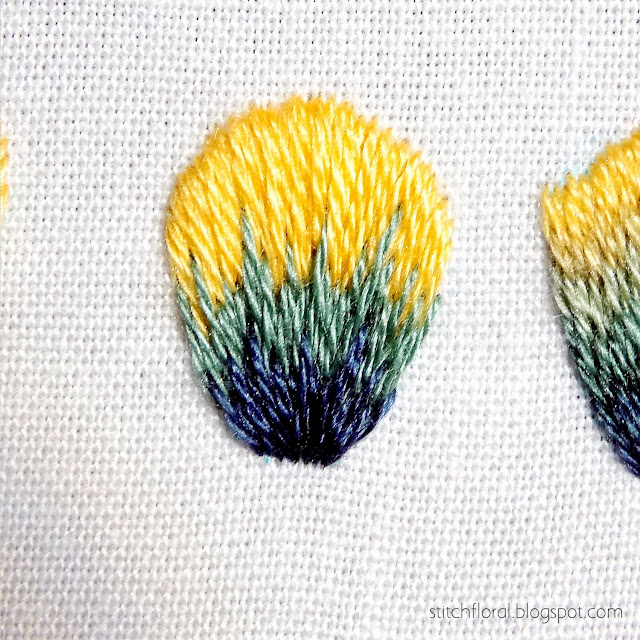Needlepainting tips part 12: more layers = better shading?
I bring you a new case study today!
Have you ever wondered about the relationship between the number of rows and the quality of mixing between long and short stitches, today's article might answer some of your questions.
By expanding these 3 shapes, the task was to transform from yellow to blue.
The first example contains only 2 colors: yellow and blue.
The second example has 3 colors: yellow → green blue
And the third example has 7 colors: yellow → 2 medium yellow green → green → 2 medium amber green → shades of blue.
Linked
My opinion
None of the examples are worse than the others, these are just 3 different situations and each has its strengths and weaknesses.
1. If you suddenly change from one color to another, I think it can look very strong and attractive. For example, when I told my mother three parables, the first one immediately caught my attention and told me that I love her.
A suggestion for this type of situation is to increase the difference in the length of your stitches. Add a few stitches (still different lengths) in the middle so that a lot of "gray" comes out.
2018-05-21 121 2 . Well, to be completely honest, this is my favorite example. But just because of the color! I mean, if you are willing to use only 3-4 colors, it is better to avoid such changes: yellow → green, blue, red → orange, yellow , etc. Basically, slide the 3 adjacent shades on the color wheel.
Instead, I recommend going for light (e.g. pink → light pink → light pink ) or shade (e.g. green → dark green officially very dark green ). Or take the nearest colors and build a bridge between them ( yellow → yellow-green → green )
3. If you want a smooth transition between colors that are not close to the color wheel, then you need 5-7 colors.
This means that each row of colors has less space (although it depends on the shape), which means you do not have as much freedom in long and short stitches. It's not as difficult to "gray" as the previous examples (again, it depends on the shape).
As a solution you can glue long and short "brick stitches". Your rope has two layers - one long, the other short - and you alternate between them. If you have little space, it will help you. Although I recommend trying and adding your best skill type.
The good news is that even if you do not, these 7 colors can be "eaten" by a few bugs in one place. So do not be afraid to increase the ride count if your long and short strings are still not "perfect"!
What do you think? :)











